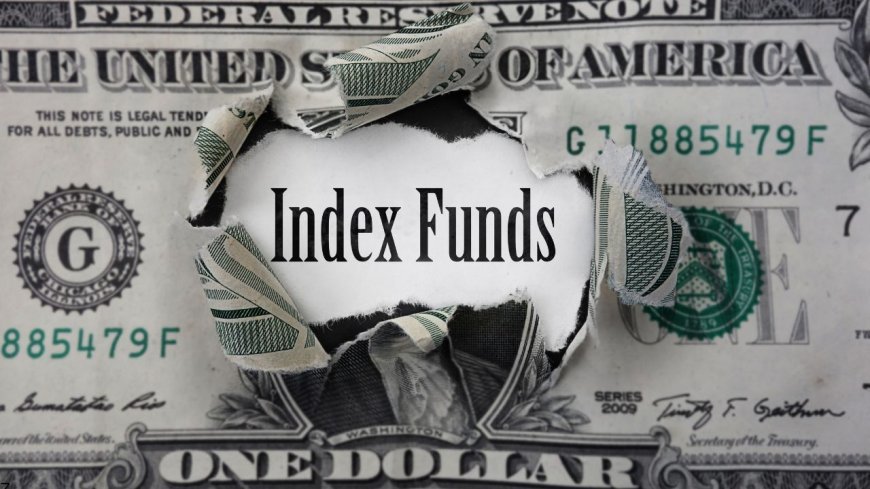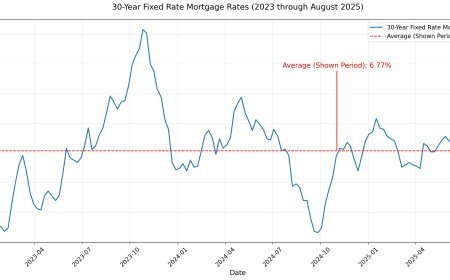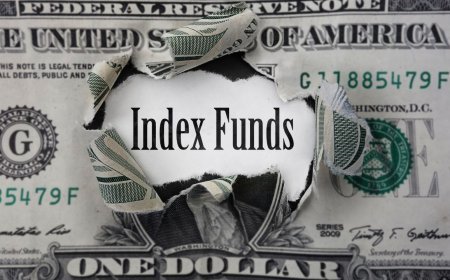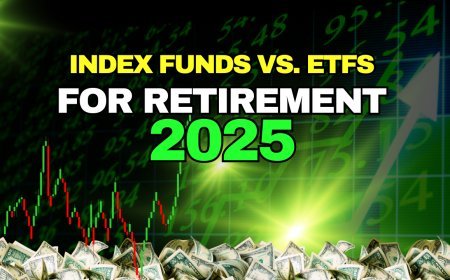The Index Fund Secret That Wall Street Doesn't Want You to Know

Wall Street’s financial empire thrives on complexity, generating billions annually through opaque investment products and active management. High fees—ranging from 0.5% to 2% annually on actively managed funds—erode investor returns, while trading commissions, bid-ask spreads, and exotic financial instruments with hidden costs further pad profits. The industry perpetuates a myth: ordinary investors need professional stock pickers or market timers to succeed. This narrative ensures a steady flow of revenue for financial giants, who market their expertise as indispensable. Yet, a straightforward, low-cost strategy—index fund investing—consistently outperforms 90% of professional managers, threatening Wall Street’s lucrative model.
Index funds disrupt this profit machine by offering superior returns with minimal fees. Unlike actively managed funds, which rely on costly human intervention to select stocks or time markets, index funds passively track broad market indices, such as the S&P 500 or global stock markets. Their simplicity eliminates the need for expensive analysts or frequent trading, slashing costs to fractions of a percent. Wall Street downplays this approach, as widespread adoption would dismantle their fee-driven ecosystem. By keeping investors in the dark, they preserve a system that prioritizes their profits over client success.
The allure of active management lies in its promise of beating the market. Financial advisors and fund managers market their services as the key to outsized returns, leveraging sophisticated models and insider knowledge. However, the data tells a different story—one the industry prefers to obscure. Index funds, with their low costs and broad exposure, consistently deliver better long-term results, exposing the inefficiencies of Wall Street’s high-fee model.
The Performance Data They Hide
The evidence is stark: over 15-year periods, approximately 90% of actively managed funds underperform their benchmark index funds after accounting for fees. Studies, such as those by Standard & Poor’s SPIVA reports, consistently show that the average equity mutual fund lags the S&P 500 by 1-2% annually. This performance gap may seem modest, but its impact over time is profound due to the power of compounding.
Consider a $100,000 investment over 30 years. An index fund tracking the S&P 500, with an average annual return of 7% after fees, grows to $761,226. In contrast, an actively managed fund averaging 5.5% (after higher fees) yields only $504,993—a staggering difference of $256,233. This gap illustrates how fees, not investment acumen, often determine long-term outcomes. The more investors pay in management fees, the less they keep of their returns.
Wall Street rarely highlights this data, as it undermines their narrative. Actively managed funds are marketed with tales of star managers who “beat the market,” but these success stories are outliers. Most managers fail to outperform consistently, as market efficiency and unpredictable events thwart even the most skilled. High fees only exacerbate this underperformance, siphoning off wealth that could have compounded in an investor’s favor.
The data also reveals another inconvenient truth: active managers often take excessive risks to chase returns, leading to volatile portfolios that may crash harder during downturns. Index funds, by contrast, offer stability through diversification, capturing the market’s overall growth without betting on individual stocks or sectors. This reliability makes them a safer, more effective choice for long-term wealth-building.
Why Index Funds Win
Index funds succeed by sidestepping the pitfalls that plague active management. First, they minimize costs. With expense ratios often below 0.1%, index funds preserve more of an investor’s returns compared to actively managed funds, which can charge 10-20 times as much. These savings compound over decades, significantly boosting wealth.
Second, index funds eliminate emotional decision-making. Active managers often succumb to behavioral biases, such as chasing hot stocks or panicking during market dips. These decisions lead to poorly timed trades that erode returns. Index funds, by contrast, follow a mechanical strategy: they own the entire market, rebalancing automatically without human interference.
Third, index funds avoid the near-impossible task of market timing. Even seasoned professionals struggle to predict market movements consistently. By staying fully invested, index funds capture all market gains, avoiding the costly mistakes of trying to “buy low, sell high.” Finally, they resist the temptation to chase performance trends, which often leads to buying overvalued assets at their peak.
By owning a broad swath of the market—thousands of stocks across industries and regions—index funds provide unmatched diversification. This reduces risk and ensures investors benefit from the economy’s long-term growth. The simplicity of this approach belies its power: doing less often yields more.
The Three-Fund Portfolio
Building a robust investment portfolio doesn’t require complexity. A three-fund portfolio—comprising a U.S. Total Stock Market Index Fund (60-70%), an International Stock Index Fund (20-30%), and a Bond Index Fund (10-20%)—offers global diversification across all major asset classes. This allocation balances growth (stocks) with stability (bonds), mitigating risk while capturing market returns.
The U.S. Total Stock Market Index Fund covers thousands of domestic companies, from tech giants to small-cap firms. The International Stock Index Fund adds exposure to developed and emerging markets, hedging against U.S.-specific risks. The Bond Index Fund provides income and cushions against stock market volatility. With expense ratios often below 0.1%, this portfolio minimizes costs while maximizing efficiency.
This approach suits investors of all ages and risk tolerances. Younger investors may favor a higher stock allocation for growth, while those nearing retirement can increase bonds for stability. The three-fund portfolio’s simplicity makes it easy to implement and maintain, requiring minimal time or expertise.
The Dollar-Cost Averaging Advantage
Discipline is key to investment success, and dollar-cost averaging (DCA) embodies this principle. By investing a fixed amount regularly—say, $500 monthly—regardless of market conditions, investors buy more shares when prices are low and fewer when prices are high. Over time, this averages out to a reasonable cost per share, smoothing out market volatility.
DCA removes emotion from investing, a major destroyer of returns. Investors who try to time the market often buy during euphoric highs and sell during fearful lows, locking in losses. DCA enforces consistency, ensuring steady contributions regardless of headlines or market swings. This strategy aligns perfectly with index funds, as it leverages their long-term growth potential.
Conclusion
Index fund investing proves that simplicity often trumps complexity. By owning the entire market, keeping costs low, and staying disciplined, investors can outperform 90% of professional managers while spending minimal time managing their portfolios. The three-fund portfolio, paired with dollar-cost averaging, offers a powerful, accessible path to wealth-building. Wall Street may obscure this truth to protect its profits, but the data is clear: for most investors, index funds are the smartest, most effective choice. Embrace simplicity, ignore the noise, and let the market’s growth work in your favor.
What's Your Reaction?
 Like
0
Like
0
 Dislike
0
Dislike
0
 Love
0
Love
0
 Funny
0
Funny
0
 Angry
0
Angry
0
 Sad
0
Sad
0
 Wow
0
Wow
0














































